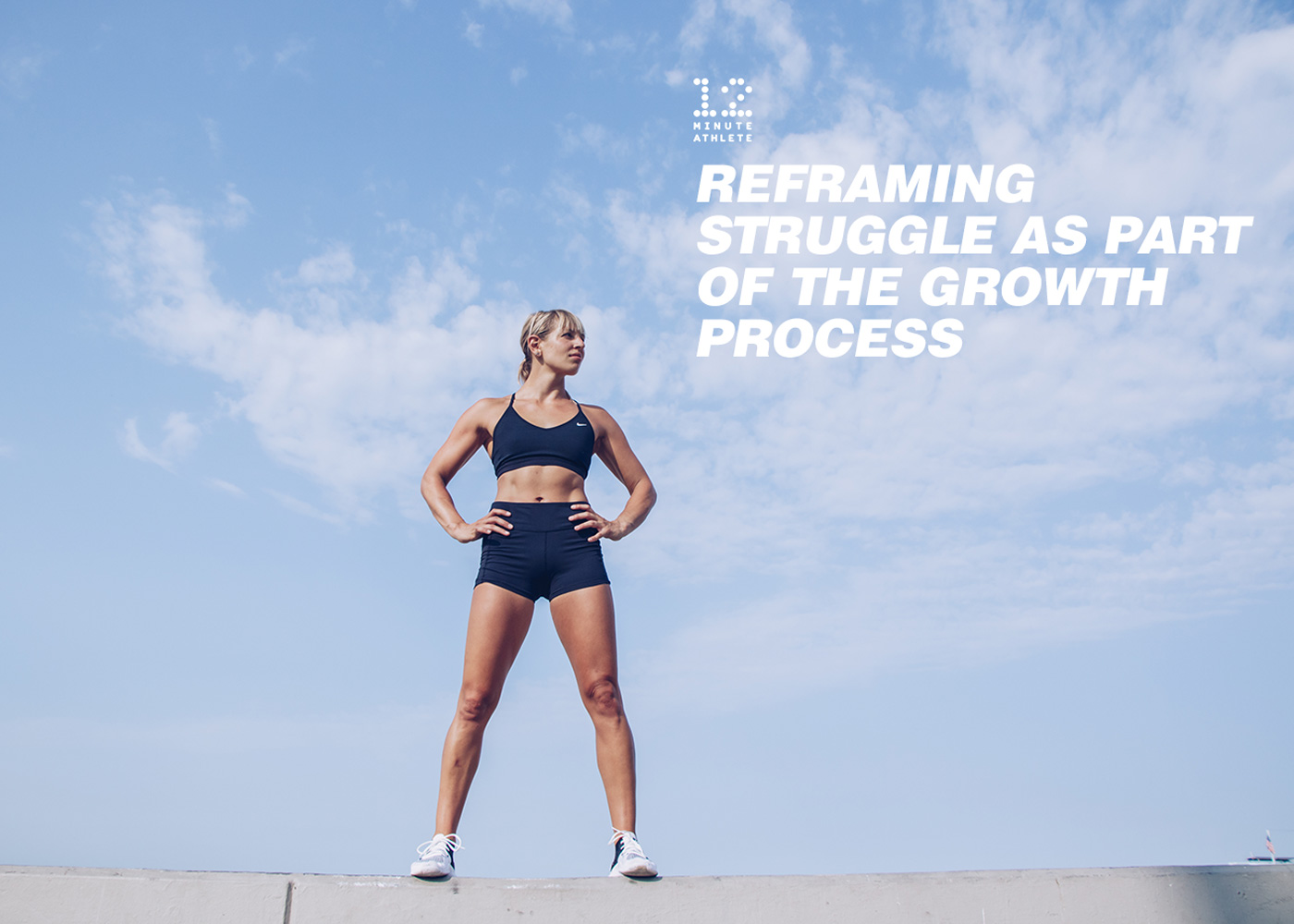We’re told to dream big and shoot for the stars, but nobody ever mentions that going after our dreams is going to be hard.
They definitely don’t tell us that it should be hard—and that if it isn’t, we’re doing something wrong.
Our society loves the myth of “uncovering” some magic ability that was unknowingly hiding this whole time.
We cheer when the kid in the superhero movie suddenly unleashes some magical ability he never knew he had and knows how to use it perfectly with little to no training. We idolize sports icons like Michael Jordan, Tiger Woods, Serena Williams, and Rafael Nadal, but we often gloss over just how much these real-life superheroes struggled along their journey.
We don’t like to struggle. But we should, because struggle is a necessary part of the growth process.
Point blank: if you don’t struggle, you won’t grow.
Reframing Struggle
When we’re struggling, most of us think something is amiss. Struggle feels negative, something to be avoided.
But this is one of the many reasons I love fitness so much: it’s such a fantastic training ground for the rest of life.
When you’re working toward a new fitness goal, whether it’s to build a new skill like a pull-up, gaining a faster sprint time, or training for an obstacle race like a Tough Mudder, you don’t expect it to come easily to you. You expect to struggle.
Training your body to become stronger and more resilient is also training your mind to do the same thing.
The Four Stages of Growth
When working toward our high, hard goals, there are actually four stages in the growth cycle. If you’re familiar with the concept of flow or being in the zone, these are the same stages of the flow cycle as defined by Harvard Benson in his book, The Breakout Principle.
Understanding these will help you better understand the process of growth and why struggle isn’t something you can—or should—avoid.
Phase One: Struggle
This first stage is when you put in the necessary hard work toward your goal.
If you’re working toward new athletic goals, this is when you grind it out day after day, continually challenging yourself to get better.
If you’re writing a book, this is when you spend your days researching, interviewing, and creating the structure for the book.
If you’re starting a new business, this is the part at the beginning where everything seems hard, and you try not to get crushed by overwhelm.
There’s really no getting around the suck of the struggle phase. Frustration is inevitable at this stage, and you have to trust enough in the process to believe that the effort really will pay off. This is where starting with a growth mindset is critical.
What’s more, the struggle phase can last for days, weeks, or even years. With time and practice, you can find ways to make it shorter and struggle more gracefully, but there’s no avoiding it altogether.
If you want to grow and make progress, you have to do the work.
Phase Two: Release
Called the release phase, the second part of the growth cycle is where you have to take your mind off the work and do something completely unrelated.
If you’ve been working handstand drills for an hour and you’re starting to get tired and lose focus, this is when you give your body a break and let all your effort settle in.
If you’ve been wrangling to understand a difficult new concept at your job, this is when you stop working and take your mind off of what you were doing.
The key here is to do something completely unrelated that’s more relaxing than it is challenging.
Go for a walk, cook a nice dinner, take an Epsom salt bath—anything to get your mind off the problem.
Active recovery is a better option here (as opposed to passive recovery like watching TV).
Phase Three: Flow
Flow is the reward for sticking with the struggle. Mihaly Csikszentmihalyi, known as the Godfather of flow, defines flow as an optimal experience where people feel “strong, alert, in effortless control, unselfconscious, and at the peak of their abilities.”
You can be in flow in pretty much any activity where you’re actively using your skills to the utmost, from athletics, to work, to playing video games, or even when doing crossword puzzles.
You might feel like everything finally clicks, or that you’re “in the zone” and nothing can go wrong. Flow is when all your hard work pays off.
Phase Four: Recovery
Flow can’t last forever. In fact, flow is a costly state for the body to produce and maintain. There’s a lot of neurochemistry that takes place during flow, and the body needs time to replenish it.
Aside from physical recovery, memory consolidation also takes place during the recovery phase. This is why you might intuitively end a training session on a good note after finally nailing a new skill—you want your body and mind to cement that new skill.
The recovery phase is where your brain moves information from short-term memory to long-term so that you can really level up, or as Benson says, “return to a new normal.”
Struggle Equals Growth
Whatever you’re working toward, the key is to remember that struggle is a built-in part of the growth process. Struggle is how you get stronger, how you gain new skills, how you grow as an athlete/entrepreneur/artist/friend/human being.
Yes, you can learn to struggle more gracefully and become more comfortable with being uncomfortable. You may even be able to reduce the length of the frustration phase with time and practice.
But if you want to make a breakthrough and really level up, you can’t avoid the struggle. Instead, you have to expect it—and learn to lean into it, no matter how much it sucks.
The bigger the challenge, the more you can expect to struggle—and the bigger payoff you’ll get when you fight the urge to give up.



